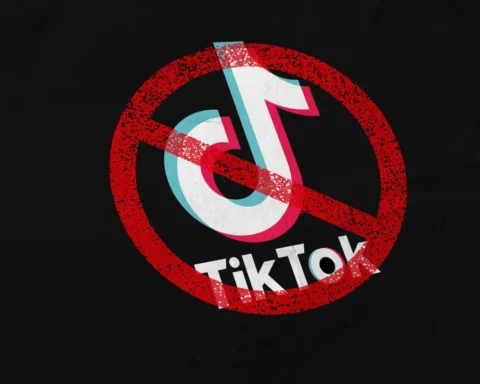[ad_1]
In a move that caught defense circles by surprise, the Army announced Thursday that it is canceling its Future Attack Reconnaissance Aircraft (FARA) helicopter program.
The announcement means that Bell Textron
TXT
and Lockheed Martin
LMT
-Sikorsky whose rival 360 Invictus and Raider X were in competition to be selected as replacements for OH-58 Kiowa Warrior Scout helicopter that the Army retired in 2019 – will forgo approximately $5 billion in development and contract funding which the Army had requested to proceed with FARA over the next five years.
The move comes despite the fact that the Army referred to FARA as a top modernization priority as recently as last December as outlined in a Forbes article published on Dec. 4.
In making the announcement to a select group of media, the Army added that its change in priorities will also see it retire its entire fleet of Shadow and Raven UAVs. The Army will also end production of the UH-60 V Black Hawk (which replaces the UH-60L) in fiscal 2025 and move to field UH-60M variants which are currently in service with the active force.
The Army is also pushing back procurement of its next-generation helicopter engine (General Electric’s
GE
Improved Turbine Engine Program) which was intended to power the FARA prototypes as well as being installed in all future UH-60s and AH-64 Apache attack helicopters.
With abandonment of FARA, the Army has abandoned the $2 billion it has already spent on the program which it kicked off with firm expectations in 2018. It has also followed a disturbing pattern of two decades. Writing in Breaking Defense, Ashley Roque pointed out that;
“There is also an ironic sense of history repeating: the decision to end FARA comes two decades to the month after the Army ended its plans to procure the RAH-66 Comanche and nearly 16 years after it terminated work on the ARH-70A Arapaho, both aircraft designed to replace the Kiowa…”
Bell Textron and Sikorsky provided me with statements on the Army’s decision this evening. Sikorsky declared that, “With a $1 billion investment, X2 aircraft offer speed, range and agility that no other helicopter in the world can match. We remain confident in X2 aircraft for U.S. and international mission needs now and in the future. We are disappointed in this decision and will await a U.S. Army debrief to better understand its choice.”
An artist’s conception of Bell’s 360 Invictus FARA prototype. Where it and the Raider X go next is … [+]
Bell Textron
Bell said it is, “disappointed by the decision on the Future Attack Reconnaissance Aircraft (FARA) program. Bell remains confident in our ready-to-test FARA prototype for the Army’s requirements. We will apply the knowledge and demonstrated successes of our FARA development efforts on future aircraft.”
The winner of the Army’s Future Long Range Assault Aircraft (FLRAA) program with its V-280 Valor, Bell added that it will, “continue to work closely with the Army on executing the … program and their future vertical lift needs.”
The decision stings both companies but probably upsets Sikorsky even more given that it lost out to Bell in the FLRAA competition and that many observers expected that it would get the nod in the FARA flyoff as a result.
As of Thursday evening, Lockheed Martin’s share price stood at $429.99, up from $427.00 at market-closing. Shares of Bell parent, Textron, closed at $87.59. When the market opens Friday morning, their valuations will be worth watching.
As FARA progressed, the Army made rhetorical changes in the emphasis of the program. In 2020, Brigadier General Walter Rugen, then Director of the Army’s Future Vertical Lift Cross-Functional Team, told me that the instead of merely replacing the Kiowa Warrior, FARA would be the Army’s “kick in the door” helicopter, taking that role from the AH-64 Apache attack helicopter.
That rhetoric was later toned-down but FARA remained a sought-after force-multiplier platform that the Army expected to provide a variety of air-launched effects (including cyber and electronic warfare) in any high-threat campaign. Rugen envisioned an F-35-like quarterbacking role for FARA as well.
As I noted at the time, Rugen’s conception of FARA was a familiar one stretching back to comments made by General Gordon R. Sullivan, Chief of Staff of the Army, in 1994 when discussing the Boeing
BA
/Sikorsky RAH-66 Comanche.
But this line of thought appears as dead as the FARA program. In explaining their decision, senior Army acquisition leaders told the media that the nature of warfare as exemplified by the conflict in Ukraine has altered their view of Army aviation priorities.
“We absolutely are paying attention [to world events] and adjusting, because we could go to war tonight, this weekend,” head of Army Futures Command Gen. James Rainey said on Thursday.
In a press release accompanying the news, Army Chief of Staff, Gen. Randy George said, “We are learning from the battlefield, especially Ukraine, that aerial reconnaissance has fundamentally changed… Sensors and weapons mounted on a variety of unmanned systems and in space are more ubiquitous, further reaching and more inexpensive than ever before.”
The AeroVironment Jump 20 an interim Future Tactical UAS that the Army has acquired for one brigade. … [+]
Breaking Defense reported that this reinvestment will also be directed to new multi-year procurement deal with Lockheed-Sikorsky for the UH-60M Blackhawk line. It will authorize Boeing to formally begin production on the CH-47F Block II Chinook. And it will be used to continue FLRAA development as planned.
Exactly how much money will be available to invest in these other systems was not made clear. However, those paying attention may make a link between the Army’s decision and funding that could become available for the Pentagon’s Replicator program which has for months faced (but not answered) questions about where it will find the finances to build tens of thousands of attritable drones.
How ever the decision pans out – we’ll learn more in coming weeks and days – it is emblematic of the Army’s longstanding disjointed (arguably schizophrenic) decision-making. Whether it can provide needed capability to warfighters in an ever-shrinking force remains unanswered.
[ad_2]









